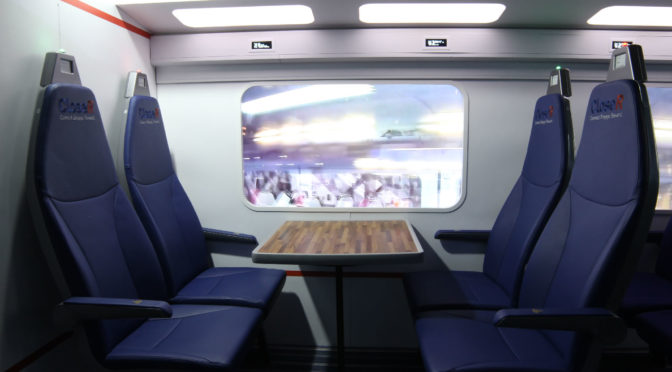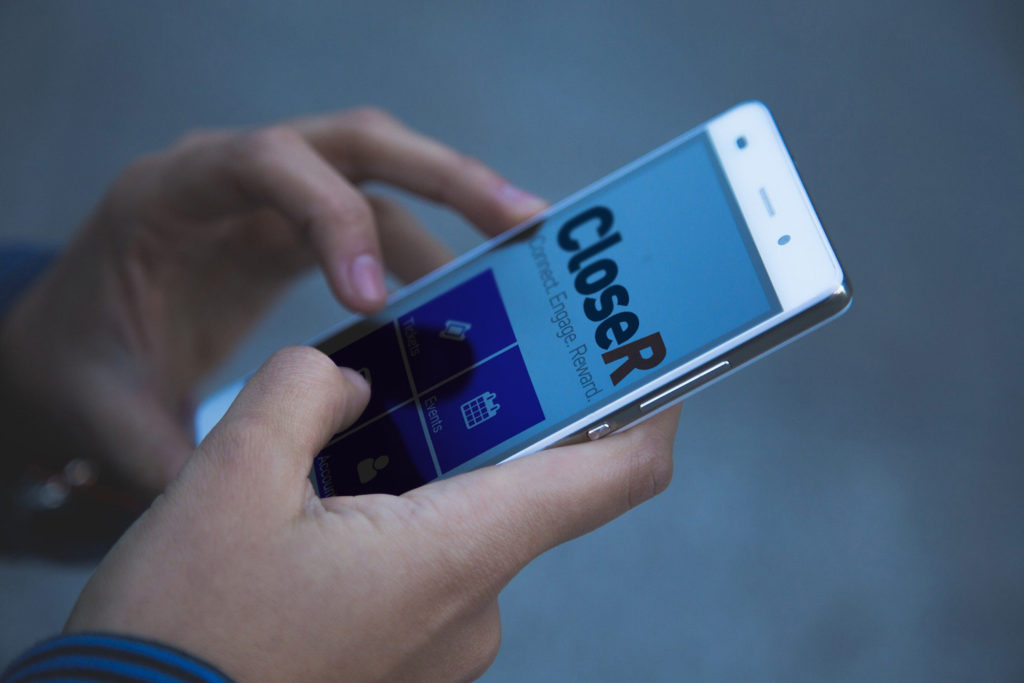
I present here a case study of the CloseR Project, with which I was involved for over two years. It received 1.2m funding from Innovate UK and the Rail Safety and Standards Board.
CLoSeR is a loose acronym for customer loyalty and dynamic seat reservation system. Features of this system provides live information to passengers and crew with the potential to improve services and user experience. This project won a bid and obtained funds via the Enhancing Customer Experience in Rail competition, and was set to deliver a step-change innovation to UK rail.
The aim of this project was to develop a new system for the rail industry, comprising a smartphone app for passengers, a tablet app for crew, seat sensors, seat ticket scanners, seat displays, and an overarching new communications system between trains and the operating company.
Partners
A consortium of 6 partners was created to build this system. They were:
- University of Warwick – Warwick Manufacturing Group (WMG) via the Experiential Engineering research group. We were responsible for the user research.
- Cranfield University – Systems Engineering Group, responsible for the back and front end development of the systems.
- Unipart Rail – Specialist provider of aftermarket goods and service for the global rail sector. They were the project managers for CLoSeR.
- TrainFX – Design and supply of leading edge technologies to rail sector clients. They developed some of the hardware and back end functionalities
- Loyalty Prime – Advanced, dynamic loyalty technology solutions. They designed and implemented the loyalty scheme for this project.
- Great Western Railway – Inter-city, commuter and outer-suburban services. They brought the train operator perspective and facilitated the recruitment of personnel and passengers.
Proposed features
The system features proposed during this research were the following:
| System Feature | Explanation | |
| 1 | Ability to search for, reserve and/or change your seat before and during your journey | Passengers would be able to choose a preferred seat (e.g. forward facing, with a table, plug socket, away from the toilet, close to the door) using a carriage map displayed on smartphones. This seat can then be changed or reserved up until the last minute. |
| 2 | Directions displayed on your phone to help you find your platform and your seat on the train | Navigational information, which will include the train composition in relation to the direction of travel, the number of coaches and the carriage ordering, so passengers can anticipate how to better get to their seats by standing at the right place on the platform. |
| 3 | Access to live information showing the occupancy levels of current and future trains | Passengers will be able to access information regarding the occupancy levels of current and future trains, in real time. |
| 4 | Ability to validate your ticket electronically at your seat, so you don’t need to present your ticket for inspection | The ability to automatically validate a ticket using a sensor located on the seat. This reduces the disturbances and removes the need for a train manager manually checking tickets on board the train. |
| 5 | Information on facilities at your destination station (e.g. details of bus connections, phone number of taxis) | Individualised information for specific passengers and their journeys, so they can anticipate what to find at the final station and plan how to proceed on the ‘last mile’. |
| 6 | Ability to earn rewards through a loyalty scheme and redeem points for rail or non-rail purchases | Passengers will be able to collect points (similar to air miles and retail points) for each journey they take. These points can then be exchanged for rewards (e.g. a free cup of tea, reduced fare price, upgrades). |
| 7 | Ability to pre-order special services (e.g. refreshments, train manager assistance) | Passengers will be able to use the system to pre-order services prior to boarding the train, which will alert the train provider. |
| 8 | Automatic compensation for late or cancelled trains | Automatic reimbursement offered to passengers of delayed or cancelled trains, instead of the current procedure in which a request has to be made via post or email. |
| 9 | Access to live journey information (e.g. ETA, alternative travel routes in the event of disruptions) | Access to real-time information regarding journeys and alternative travel in case of disruptions. This will remove the reliance that passengers have on checking information boards at stations and make it easier for passengers to check the platform number for their connecting train. |
| 10 | A diagram of free and reserved seats on your phone or on screens on the train and platform | Passengers will be able to see the occupancy level of carriages, and check which individual seats are available. Users will not need to be there and check each seat or displays visually. |
Stakeholder interviews
The first step of the project involved interviews with stakeholders, who were invited to explain their point of view in relation to the current state of rail in the UK. Qualitative analysis informed the aspects of the industry in need for innovation. Interviews were conducted with participants from diverse segments. These comprise industry specialists (7 interviewees), senior management personnel (12), systems operations managers (3), and train crew (8). All participants were working for train operating companies (TOCs), rolling stock leasing companies (ROSCOs), related industries in the supply chain, associations and government bodies. The information obtained from this research indicated what innovative technologies could be implemented in order to help improve the efficiency of the rail industry and the passenger experience in the UK. With definitions of system requirements, we proceeded to research the proposed technology and investigate with different user groups their perceptions and acceptance.
Train crew user research
No studies were found using customer journey maps and personas to investigate the work performed by train crew. It was necessary to undertake user research in order to define the experience and prioritise areas for development, which will then results in specific changes being developed and piloted. By understanding experiences throughout crew’s work journey, this research presented a comprehensive picture of their work routines and indicates where technology can improve these experiences. A study with 22 on-board train crewmembers involved semi-structured interviews and in-the-field observations. By shadowing crew as they went about their work shifts, it was possible to obtain a first-hand account of their work experiences. We produced diagrams to describe positive and negative aspects of the journeys from the perspective of on-board staff.
Personas were also created to picture their needs, attitudes and behaviours. Results informed the design of technology that could improve crew’s experience during work. But some of the features, such as automatic ticket validation, were in fact, ranked negatively by train crew. There were concerns about job security and the fact that these features would remove the positive interactions with passengers. Further explanation about these issues can be seen on our journal article detailing this research. We suggested modifications and improvements for the requirements of the technological systems to better fit train crew journeys and enhance their experiences.
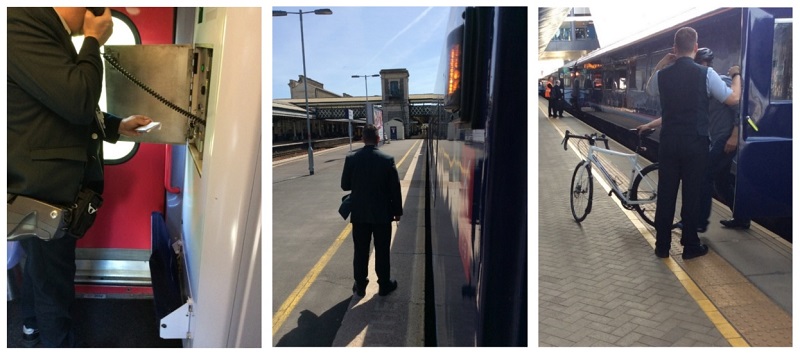
Passenger research
Inverviews
User experience research was used to understand how rail passengers perceive their travels and to identify how the design of technology can improve this experience. We conducted in-depth, face-to-face semi-structured interviews and used additional questionnaires given to passengers on board of trains.
A customer journey map was produced to illustrate the passengers’ experiences at diverse touchpoints with the rail system. The positive and negative aspects of each touchpoint are plotted over the course of a ‘typical’ journey, followed by the explanations for these ratings.
Personas were also used to facilitate the understanding of user behaviours, needs, motivations, characteristics and limitations. A set of four personas was produced in order to illustrate who the users of the train systems are as well as their characteristics. These personas were useful to communicate to the system engineers the need to redesign some features to better meet user needs.
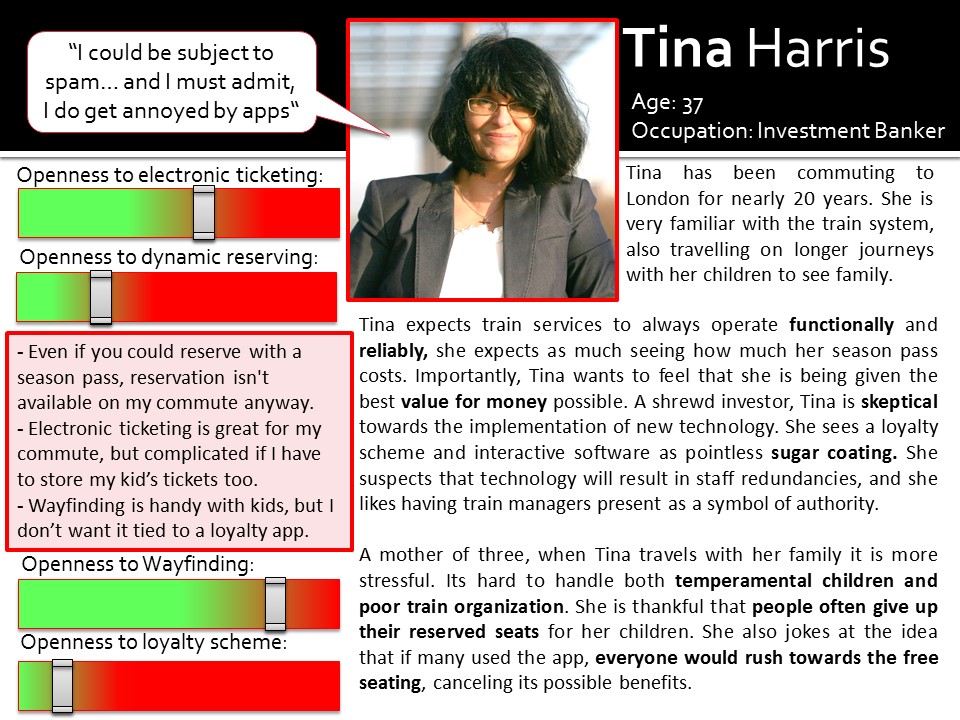
User observation
Another study comprised user observation and involved video recording technology to observe the movements of passengers on platforms to observe the phenomenon of concentrated boarding, when rail passengers congregate in certain areas of the platform and board the train carriages that stop near these areas.
Some of the proposed system features, for example the wayfinding information (to locate your seat upon arrival of the train) and carriage occupancy levels could motivate passengers to spread out more on the platform. Consequently, alighting and boarding could be more efficient, shortening the dwell time.
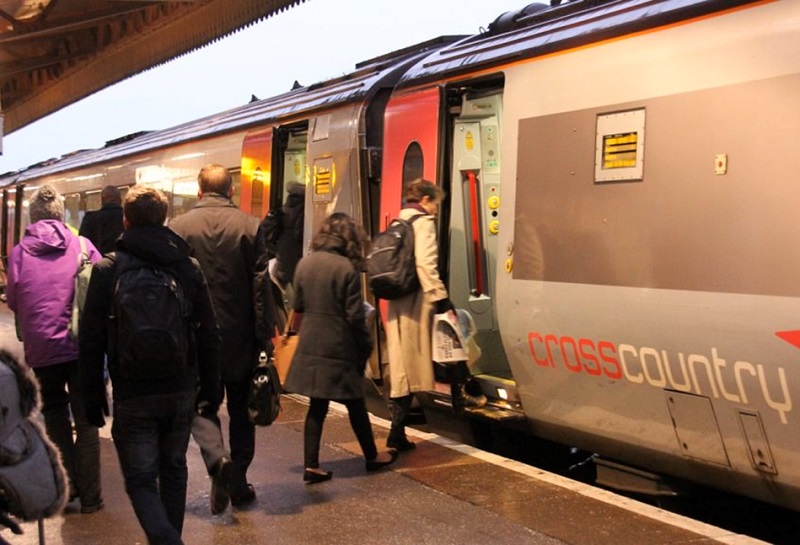
Surveys
Another study involved a large-scale quantitative research via an online survey. Respondents were asked to quantitatively rank the 10 features listed above. A best-worst preference questionnaire was developed to evaluate how passengers value different technological improvements to rail transport in the UK. This study also included the segmentation of responses according to passenger type (commuters, business and leisure) and the similarities and differences in responses from the public versus those working directly in the rail industry.
Results indicate, not surprisingly, that the favourite feature is the automatic compensation for delayed or canceled trains. This study also shows which technological innovations can enhance the passenger experience, especially at the problematic touchpoints, e.g. when collecting tickets, navigating to the platform, boarding the train and finding a seat. The research with rail passengers suggested improvements in the requirements for future technological innovations to improve the travelling experience.
Integration and simulation
The final stage of this research involved the integration of all parts of the CLoSeR system into a fully working prototype. Hardware and software were designed and developed, and brought into a simulator at WMG, university of Warwick. Engineering tests were performed, and a usability study was conducted with train passengers. This exercise informed the redesign some of the components of the system in order to improve the usability, ease of use and acceptance of the CLoSeR system.
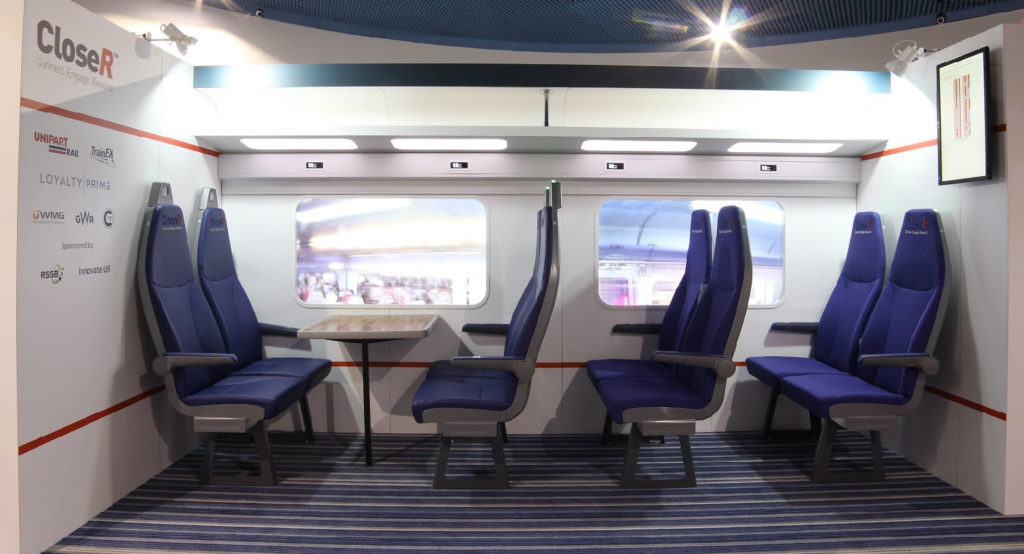
Impact and future developments
The outcomes of this project motivated some of the partners to pursue further funds to bring the proposed technology closer to deployment. A subsequent project named CloseRFIT was awarded £350,000 from RSSB and Innovate UK, from the First of a Kind competition: Demonstrating Tomorrow’s Trains Today. A prototype of the CloseR system was built to allow engagement with each customer individually, enhancing and rewarding the customer’s travelling experience, whilst improving the efficiency of on-train operations. The prototype system is currently being installed onto an in-service coach from a major train operating company to run on a British mainline. On the successful trial, the expectation is to perform a complete fitment of the system to all their fleet carriages.
